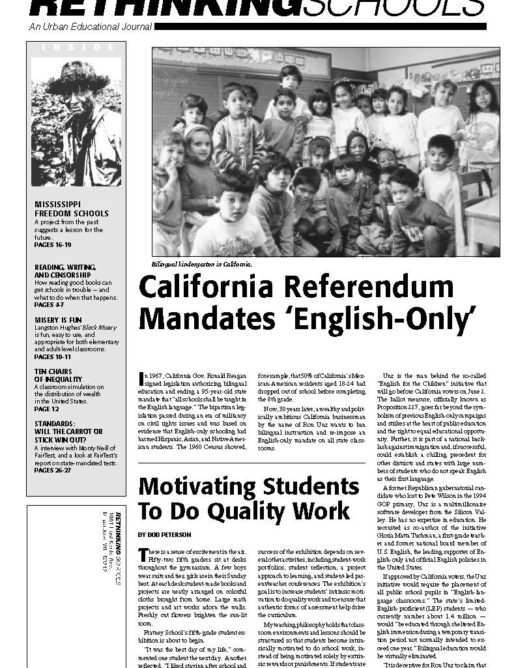Preview of Article:
Motivating Students To Do Quality Work
The first year, the student exhibition was almost an afterthought and suffered from lack of planning. The expectations were vague, and the results were disappointing. It happened this way: After spring break I told the children that on the last day of school before the completion (graduation) ceremony, kids would display the projects and work they had completed throughout the year. A few students worked very hard on their displays. One girl, Jade Williams, brought a beautiful tablecloth and flowers to accompany her work, which included a couple of books of poetry that she had published in my classroom. The day before the ceremony we transformed our classroom into a display area and each fifth grader put out a name card and work to display. Unfortunately, the day’s completion ceremonies and emotional good-byes overshadowed the exhibition; by the last day of school, fifth grade, for my students, was history.
But a number of staff members showed interest in the students’ work. Their encouragement, and the proud smiles of Jade and her mother, convinced me to try again.
Changes in the Exhibition
Some important changes the following year paid off. I explained the exhibition at the start of the school year, showing photos of Jade and her mother standing beside her display. I moved the exhibition into the third-floor gymnasium and scheduled it a week before the end-of-the-year completion ceremony. The third- and fourth-grade students visited the exhibition not only so that they would know what to expect in fifth grade, but also to provide a non-threatening audience and a practice opportunity for the fifth graders. Also, I invited other staff, members of Fratney’s site-based council, and other community members, ranging from university people to school board members to local business people.
The afternoon before the exhibition, the fifth graders moved their desks into the gymnasium and set up their displays. The following morning they completed preparation; that afternoon the third and fourth graders visited. They were quite impressed, especially proud of any sibling who was exhibiting work. For an hour after school, parents and staff came.
The results, though better, were still uneven. Some students excelled; others had little to show. Moreover, a former partner teacher and I differed regarding what constituted worthwhile display work. At the last minute she had students bind their math worksheets from throughout the year. This was symptomatic of a larger problem: some students focused on the quantity of work instead of the quality. Moreover, despite attempts to encourage students to reflect on their growth as learners, there were few written reflections and what there was, was shallow. This was due to a combination of factors, including my not allocating adequate time for this complex task, failing to model quality reflections, and not developing the vocabulary necessary for more nuanced thinking and critiquing.</p

